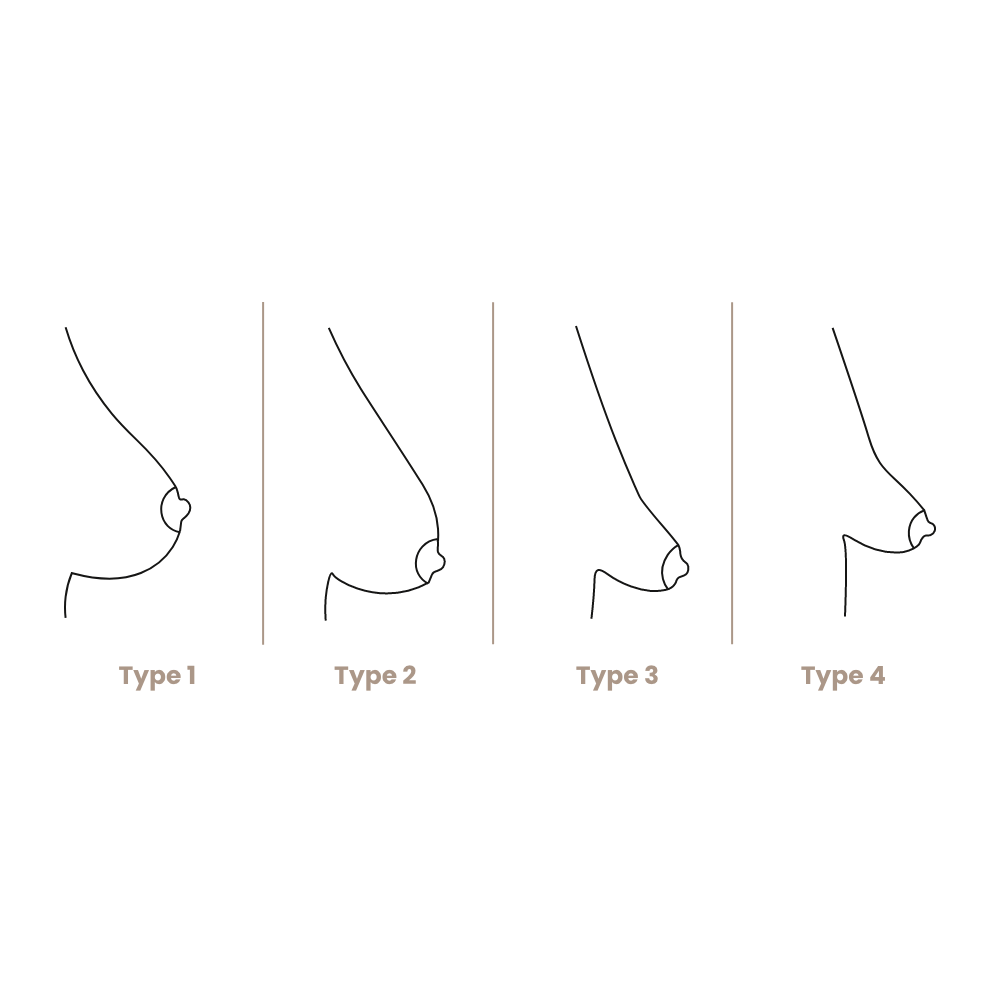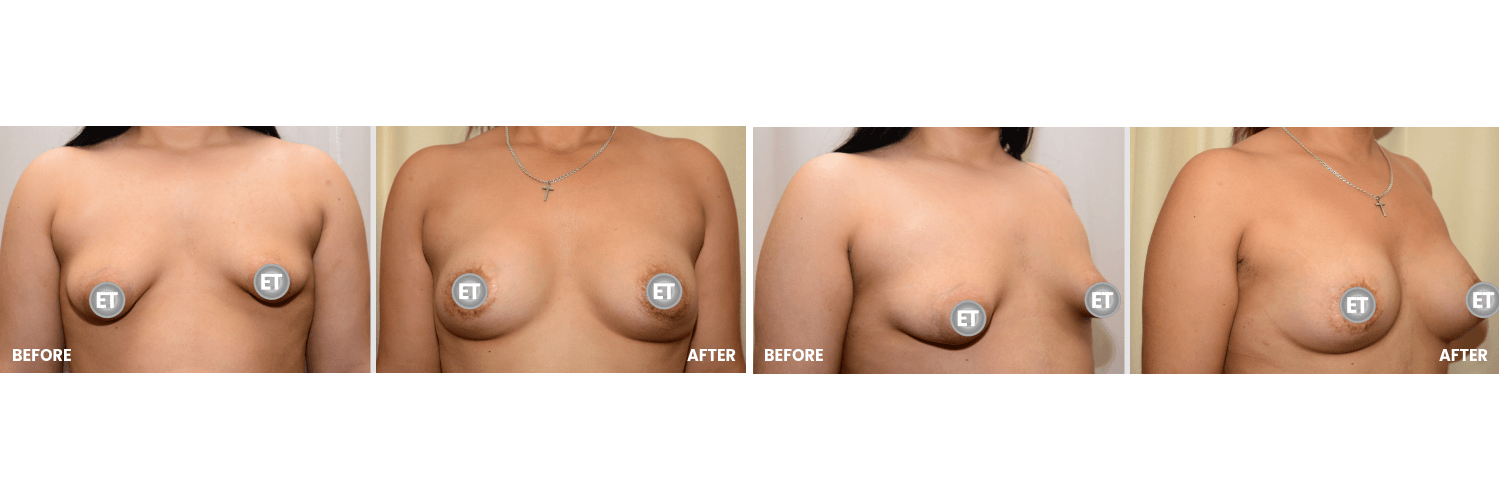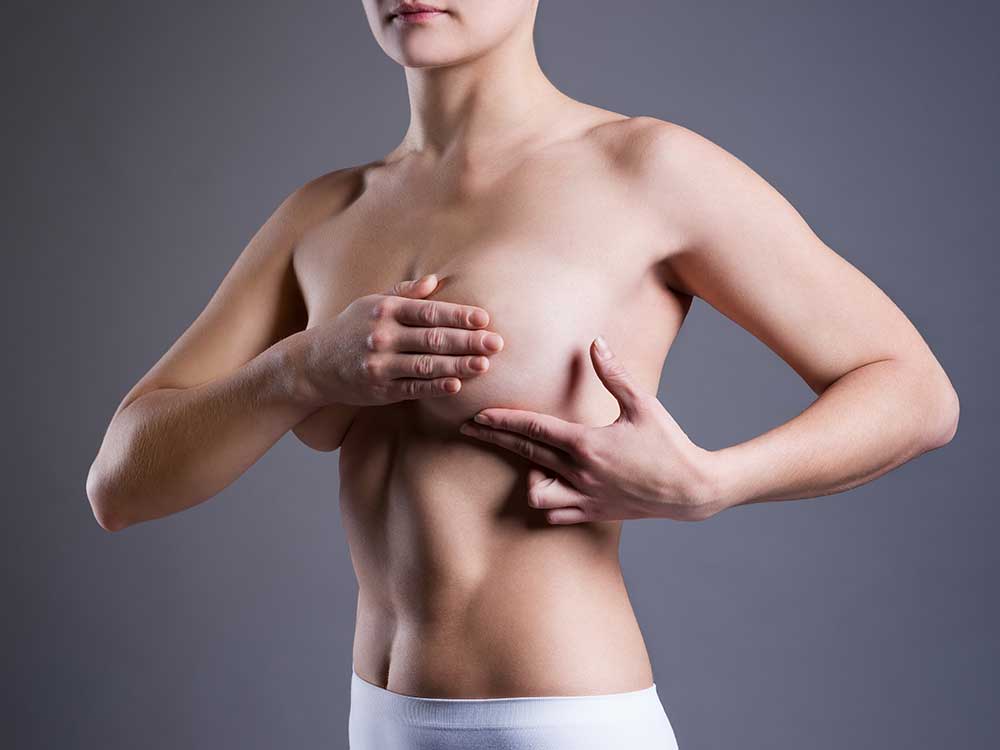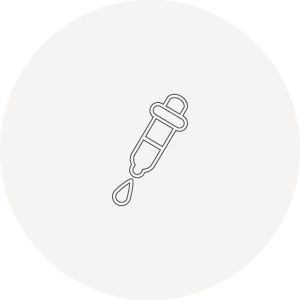Important Facts About Tuberous Breast Deformity
The exact causes of tuberous breast deformity are still not fully understood. However, it is assumed that both genetic and environmental factors play a role. A genetic predisposition may cause certain breast gland structures to develop improperly. Hormonal imbalances during puberty may also contribute to the deformity, although their precise impact remains unclear. In rare cases, trauma such as breast injuries or previous surgeries can interfere with normal breast development and lead to a tuberous deformity — though this is considered an exceptional cause.
The appearance of a tuberous breast deformity can vary from mild to severe. Typically, the breasts are asymmetric and have an abnormal shape. The most common form features a tubular (trunk-like) structure with a narrow base, a slender tip, and enlarged areolas (6–8 cm in diameter).
In many cases, there is also underdevelopment (hypoplasia) of the breast tissue, resulting in breasts that are both deformed and too small, often asymmetrical, and differing considerably in size (see reference images).
The areola (nipple area) may also be displaced — too low, too high, or too far to the side.
These characteristics can naturally lead to significant psychological distress, especially in young women, as the breast represents femininity and attractiveness. Affected girls and women often avoid undressing and may feel severely limited in social and romantic relationships due to their diminished self-esteem.

Concept of Correcting Tuberous Breast Deformity
Conservative (non-surgical) treatment options for tuberous breast deformity are very limited, as this condition does not respond to non-surgical methods. In some cases, hormone therapy may be recommended to stimulate breast growth, but its effectiveness is limited, and there is little scientific evidence to support its success.
The surgical correction of a tuberous breast deformity can be a true challenge, depending on the severity and type of the deformity — yet it remains the only truly effective treatment.
A comprehensive correction must address all aspects of the deformity:
- Reshaping the breast to transform its conical or tubular shape into a natural, rounded form,
- Augmentation of underdeveloped breasts or correction of asymmetry, and
- Adjustment of the areola’s position and size, which is very often necessary.
Technique of Correction of the Mammary Tuberous Deformity
The correction of the breast shape can almost always only be achieved by detaching the glandular body from its base (the pectoral muscle) during surgery, repositioning it outward, and then dividing the cylindrical/conical structure at its base — essentially spreading it open like the segments of an orange. The idea of partially incising the glandular body of a young woman may sound unappealing, but in fact, this is the only effective method to transform a cylindrical shape into a hemispherical one.
It should be noted that, in such cases, the ability to breastfeed may not be optimally preserved or could be partially lost. In cases of mild deformity, a fat graft (autologous fat transfer) can be used to correct the shape by precisely placing the fat into the deficient areas — without the need for a major surgical procedure.
The correction of volume deficiency is most easily achieved with a silicone implant, which has the advantage of accomplishing everything in a single operation. However, it also carries all the disadvantages associated with foreign body implants (capsular fibrosis, deformation, sagging, etc.).
An alternative — and generally the better one — is autologous fat transplantation, though it usually needs to be repeated two or three times, since the survival rate of the transplanted fat is limited and not entirely predictable. Only in rare cases is a tissue expander required to pre-stretch the skin.
The Areola Almost Always Needs to Be Reduced
Reducing and repositioning the areola (nipple area) is almost always required in the correction of tuberous breast deformity. While this step is technically less complex, the procedure as a whole demands precise planning and significant surgical experience to achieve a harmonious and satisfying result.
IMPORTANT: An Implant Alone Is Almost Always the Wrong Approach
It must be emphasized very clearly that inserting a silicone implant alone, as done in a standard breast augmentation, is usually insufficient.
An implant increases breast volume but does not correct the abnormal shape — therefore, it cannot serve as a standalone solution.
By contrast, autologous fat transfer (lipofilling) can, in mild cases, achieve satisfactory results through precise modeling of the breast shape. However, this requires 2 to 4 sessions, since part of the transplanted fat is naturally reabsorbed by the body.
The enlarged areolas must, in any case, be corrected separately to restore a natural and proportionate appearance.

Summary
The mammary tuberous deformity is a complex anomaly of breast development that can affect both the aesthetic appearance and the function of the breast. The exact cause of this deformity is not yet fully understood, and there are various surgical treatment options that can enable a significant improvement in breast shape. The choice of the right technique depends on the individual needs, the nature, and the degree of the deformity. A thorough evaluation by an experienced plastic surgeon is essential. It is important that the patient has realistic expectations and is aware of the possible risks and complications before deciding on surgical treatment; therefore, parents can/should be included in the consultation for younger patients.
Aftercare: depending on how extensive the procedure is, aftercare must be planned accordingly. If the correction of the mammary tuberous deformity is carried out exclusively with autologous fat, the treated breast must be kept still for eight weeks, which means avoiding bouncing sports (running, aerobics). Strength training in a lying position without jumping is already allowed after 10 days. In the case of more extensive procedures where the breast shape is surgically corrected, absolute rest is required for 14 days. A supportive bra, which must be precisely fitted, should be worn for at least six weeks; afterward, avoid bouncing sports for another four weeks and then always wear a sports bra when running.






